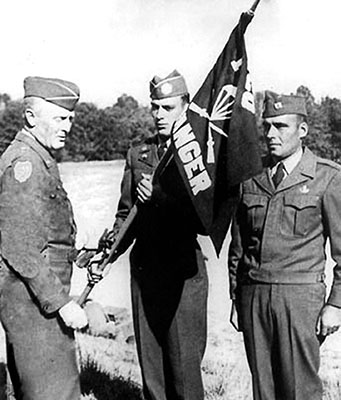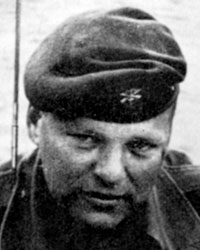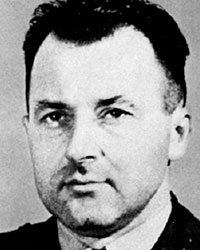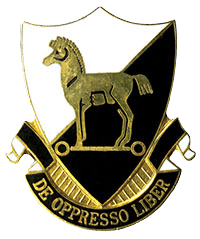“These men of the Army Special Forces (Airborne) represent the first formal recognition of guerrilla warfare in modern United States Army planning.”1— LTC Melvin R. Blair, OCPW
NOTE
Continued from Part I: Smoke Bomb Hill, Birth of the Psywar Center
AUTHOR’S NOTE
Prior to the publication of this article, the Army Special Operations community suffered the losses of COL (retired) William Ewald (25 December 2011) and CSM (retired) Johnny A. Dolin (17 December 2011). To their credit, both provided valuable advice and assistance to the end. Their knowledge, experience, unselfishness, and dedication to duty will be greatly missed.
DOWNLOAD
The 25 June 1950 attack of the North Korean People’s Army (NKPA) on South Korea caught the United States and the Republic of South Korea politically and militarily unprepared. Specialized units from WWII such as the Rangers, Merrill’s Marauders, and the First Special Service Force, trained to ‘take the war to the enemy’ and infiltrate behind enemy lines to disrupt operations, interdict lines of supply and communication and develop and employ indigenous combat forces, had not existed since 1945. When the Korean War erupted, the United States found itself in an unusual situation. Not only was it now involved in its first ‘undeclared war,’ it also lacked a skilled force to perform the special operations necessary to neutralize the threat. To overcome these operational short-falls, the U. S. Army created ‘Special Forces’ (SF) to organize and train indigenous personnel inside enemy territory.2 The purpose of this article is to explain how Special Forces came into existence and revitalized the U. S. Army’s ability to meet future unconventional warfare (UW) challenges.
Unsure of how to address UW, the Army’s leadership turned to Brigadier General (BG) Robert A. McClure for viable solutions. In retrospect, BG McClure was a logical choice because he had been General (GEN) Dwight D. Eisenhower’s World War II Psychological Warfare (Psywar) Division chief, an assignment that made him the senior serving officer most familiar with UW. His experience though had to be translated to meet the current situation. While BG McClure understood how Psywar fit into UW, he knew very little about direct action by guerrilla forces and their integration into conventional military campaigns. As a result, he gave higher priority to developing Army Psywar capabilities, although he believed that Psywar and UW were inextricably linked.3
To demonstrate this connectivity between Psywar and UW, BG McClure capitalized on two of his major achievements. Heading the Psychological Warfare (Psywar) Division, McClure formed a separate element under the Department of the Army G-3 Operations and staffed it with veteran UW officers like Lieutenant Colonel (LTC) Russell w. Volckmann, Colonel (COL) Wendell W. Fertig, LTC Melvin R. Blair, COL Aaron Bank, and LTC Martin J. Waters. By doing this, McClure effectively put their collective experiences in guerrilla warfare and long-range penetration operations during World War II to work in his Special Operations Division. They were responsible for staff supervision of all psychological warfare and special operations activities.4 On 15 January 1951, the Psywar Division reorganized again, and became the Office of the Chief of Psychological Warfare (OCPW). Unique in its responsibilities, OCPW enjoyed the luxury of being the first Army staff directorate formally recognized as a Special Staff Division with direct access to the Army Chief of Staff. McClure followed this by integrating Psywar into the Army staff and establishing the U. S. Army Psychological Warfare (Psywar) Center on ‘Smoke Bomb Hill’ at Fort Bragg, North Carolina on 27 March 1952.5

In the meantime, GEN J. Lawton Collins, U. S. Army Chief of Staff, attended a guerrilla warfare conference at Fort Benning, Georgia. During the conference, GEN Collins said: “The Infantry School should consider the Rangers as well as other troops and indigenous personnel to initiate subversive activities. I personally established the Rangers with the thought that they might serve as the nucleus of expansion in this direction.”6 The OCPW representative at the conference was Lieutenant Colonel (LTC) Russell W. Volckmann, the former WWII commander of the Philippine guerrilla forces on Northern Luzon. Based on his UW experience, the Infantry School asked LTC Volckmann to analyze GEN Collins’ speech to determine what type of special unit the Army needed and its primary purpose. This analysis “was the first evidence within the Office of the Chief of Psywar of the philosophical basis for the creation of an Army unconventional warfare capability.”7
Volckmann believed that ‘special forces’ operations should be an accepted part of conventional ground warfare. They should not be considered irregular or unconventional warfare. The ultimate objective of ‘special forces’ operations was to organize and support guerrilla or indigenous forces that are capable of efficient and controlled exploitation in conjunction with land, air, and sea forces. Volckmann asserted that the Army had the inherent responsibility in peace to plan and prepare to conduct ‘special forces’ operations, since in wartime the Army would organize and execute those operations. It was unsound, dangerous, and unworkable to delegate these responsibilities to a civilian agency.8







